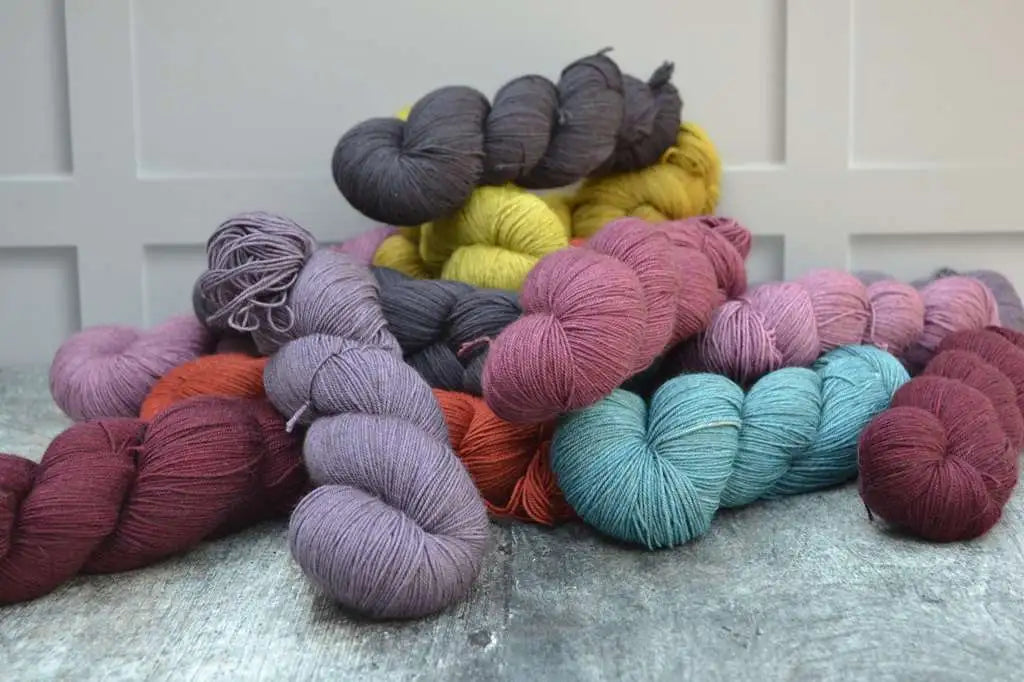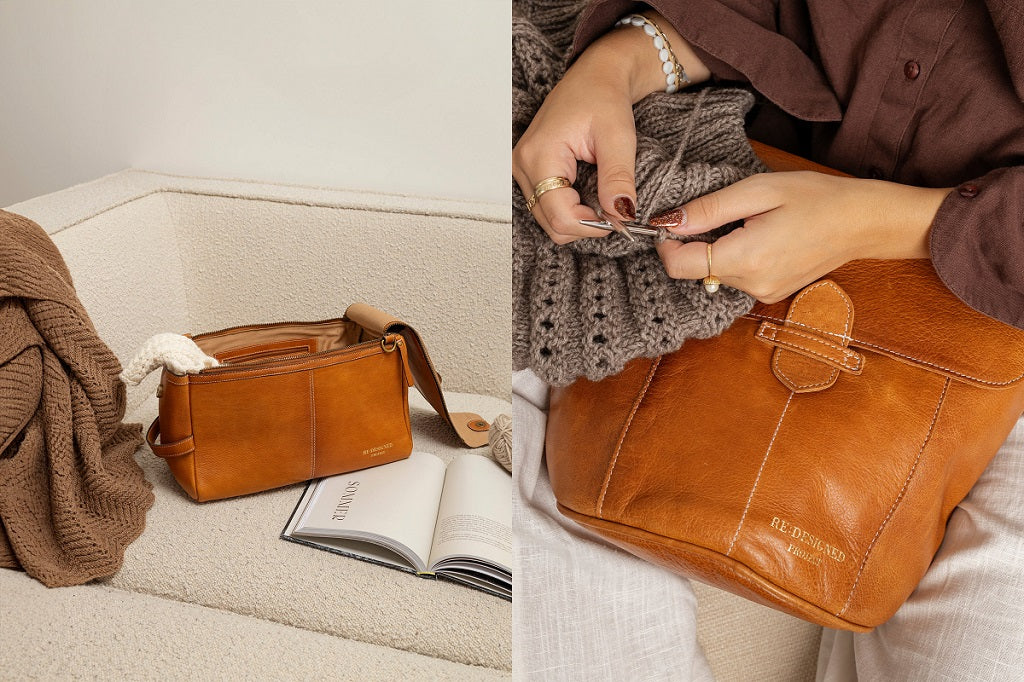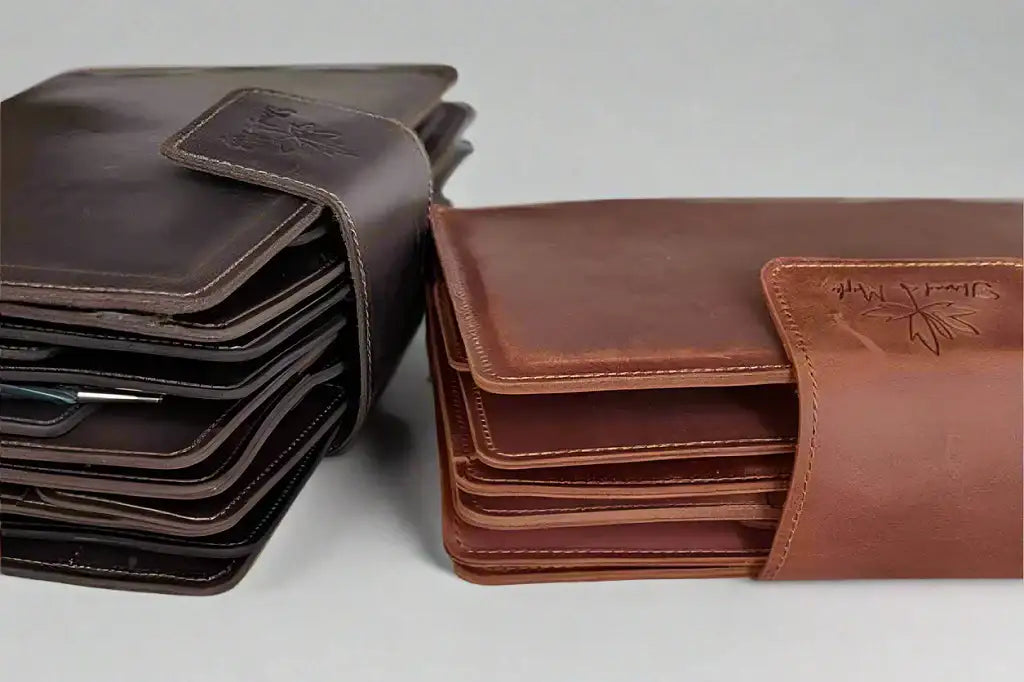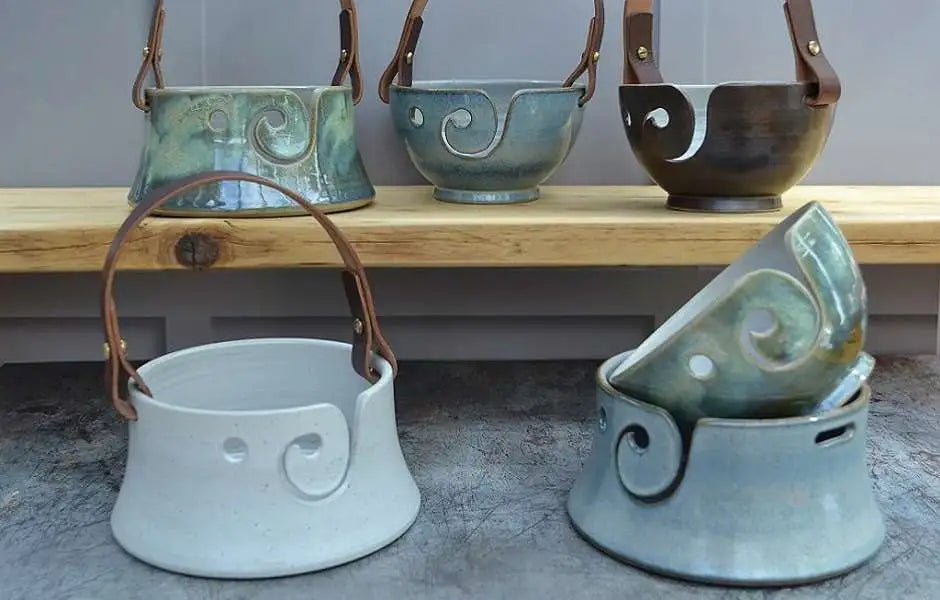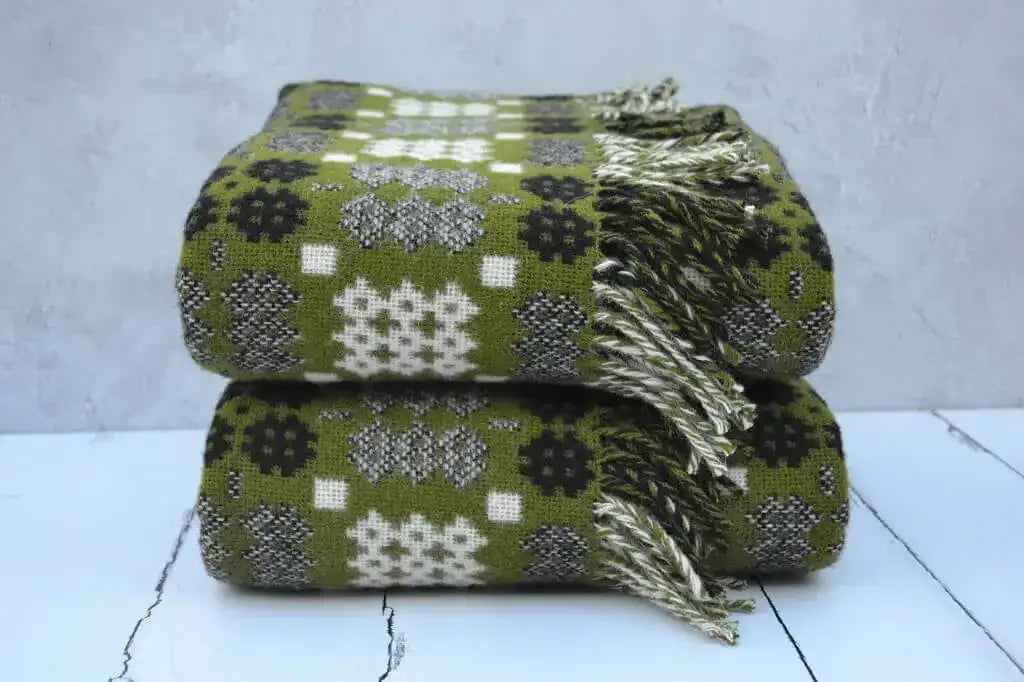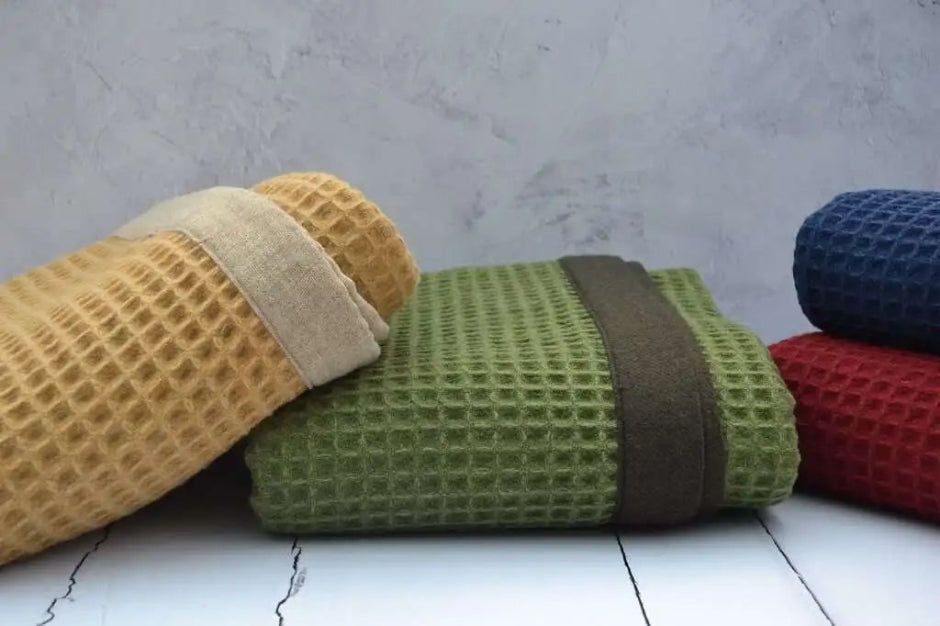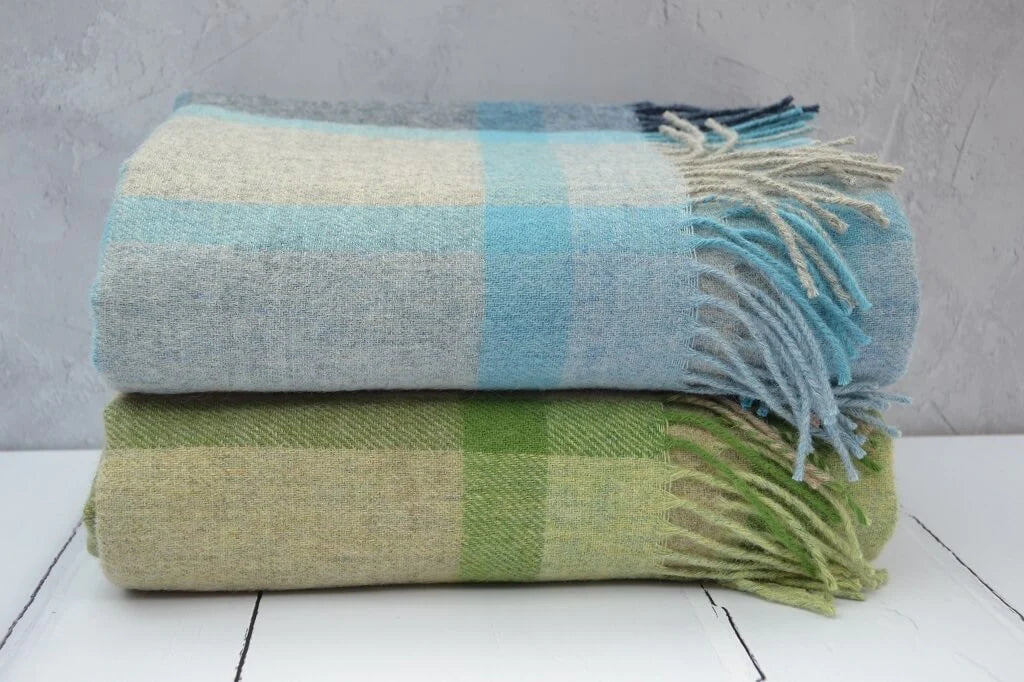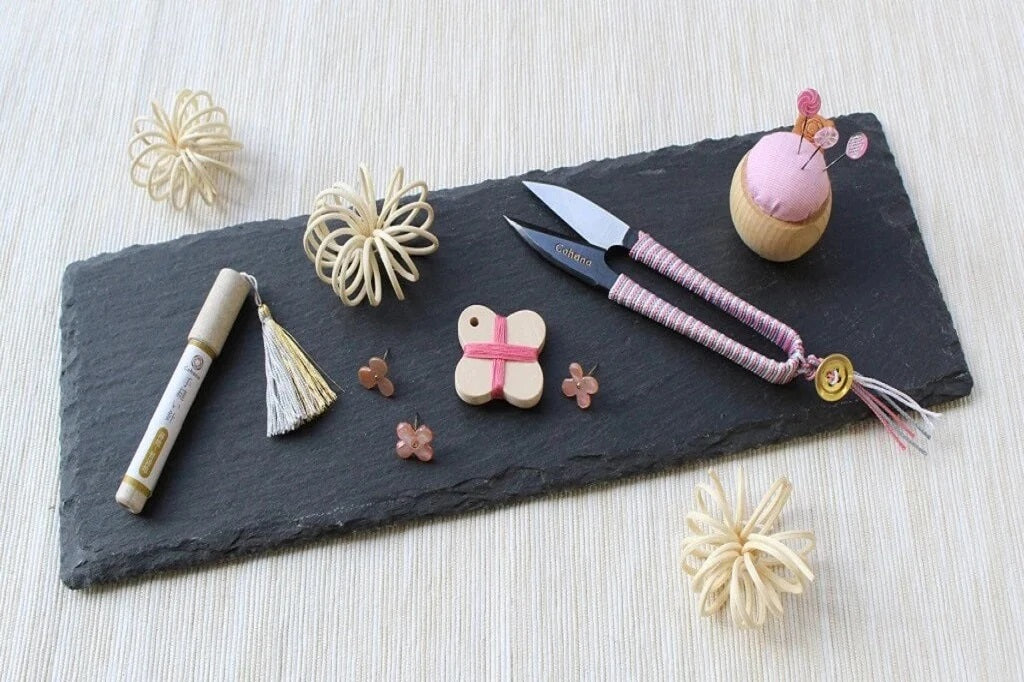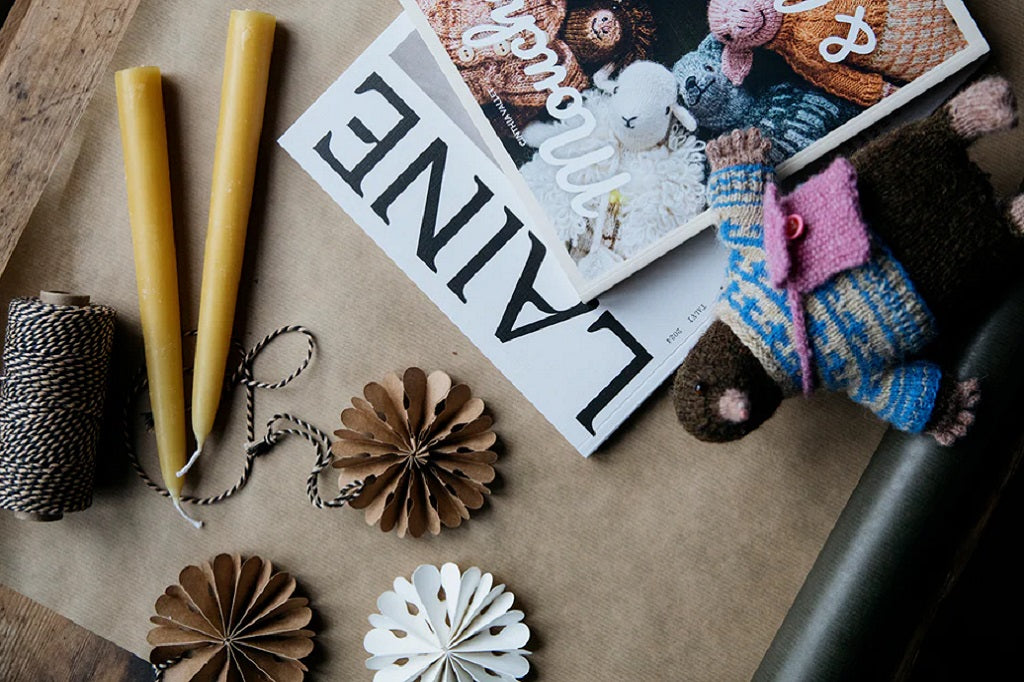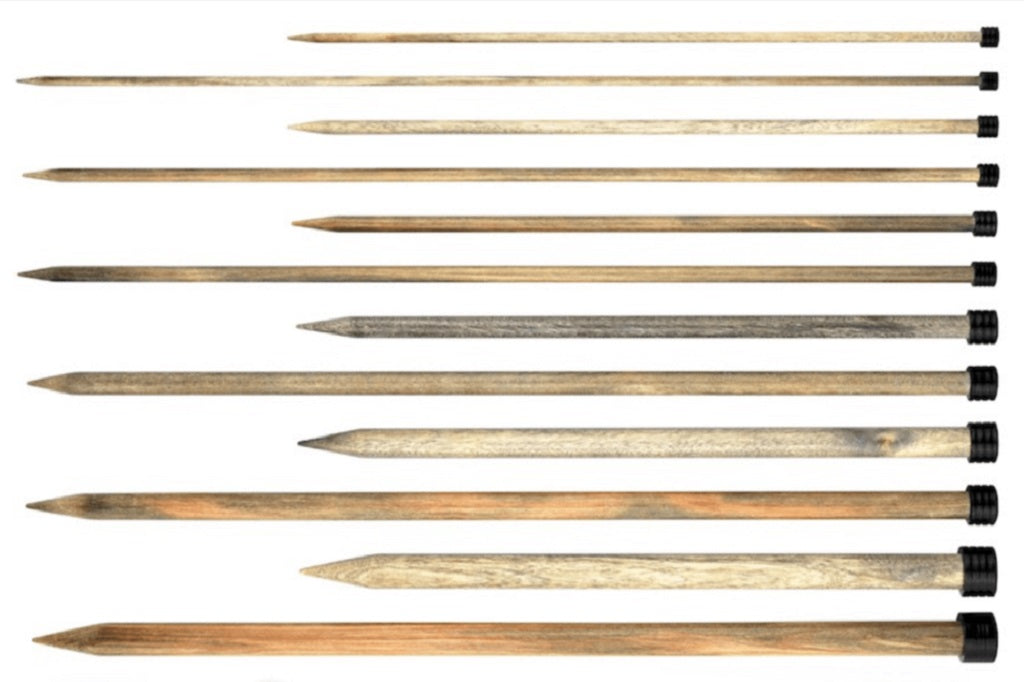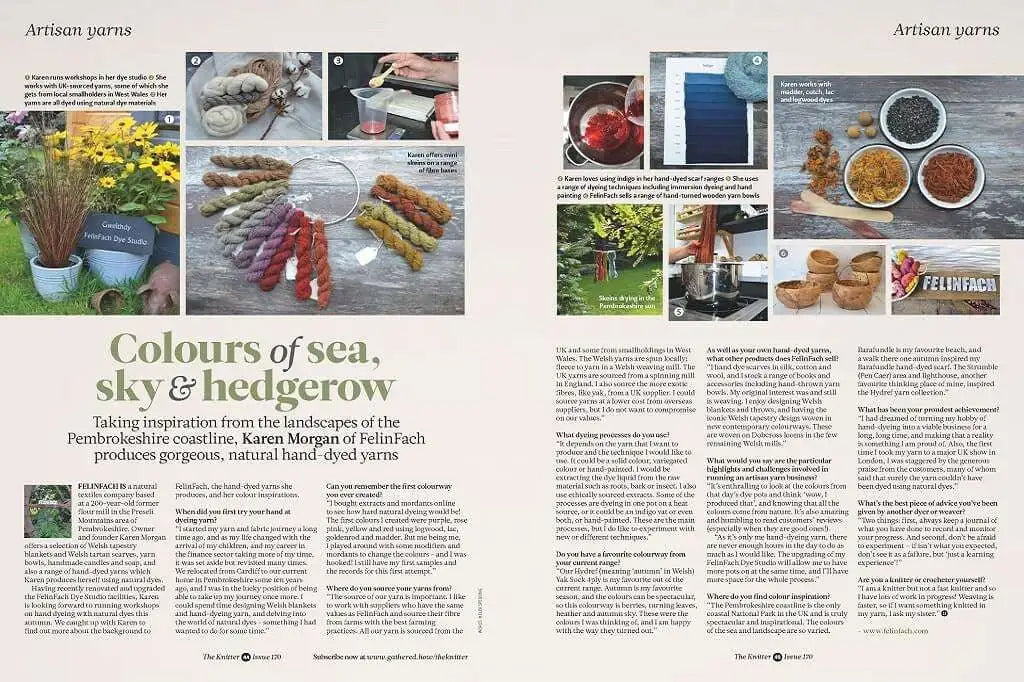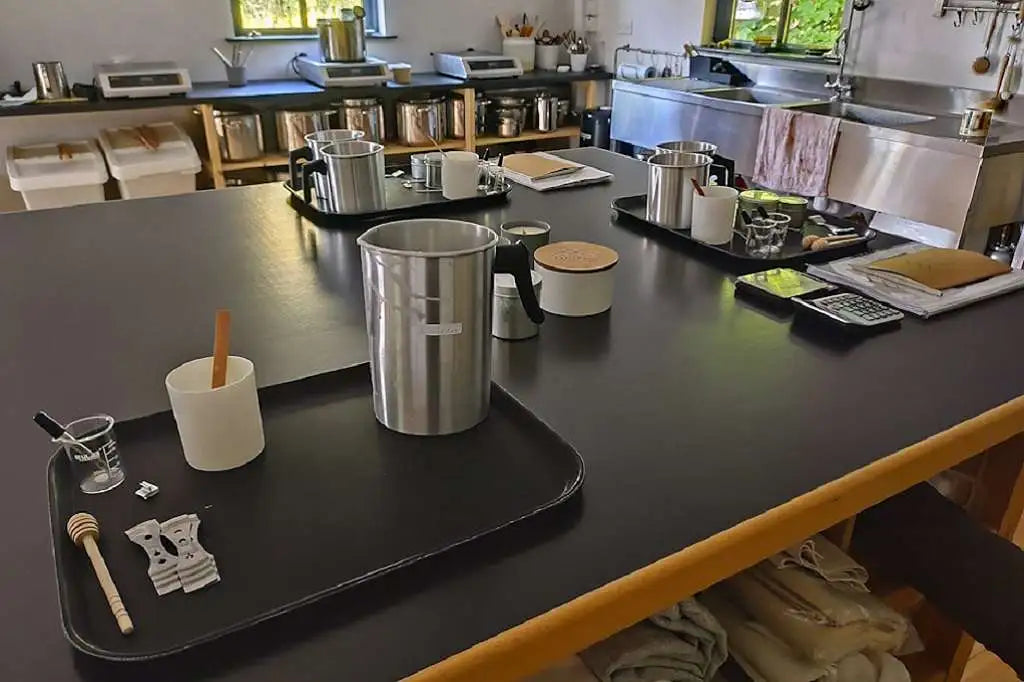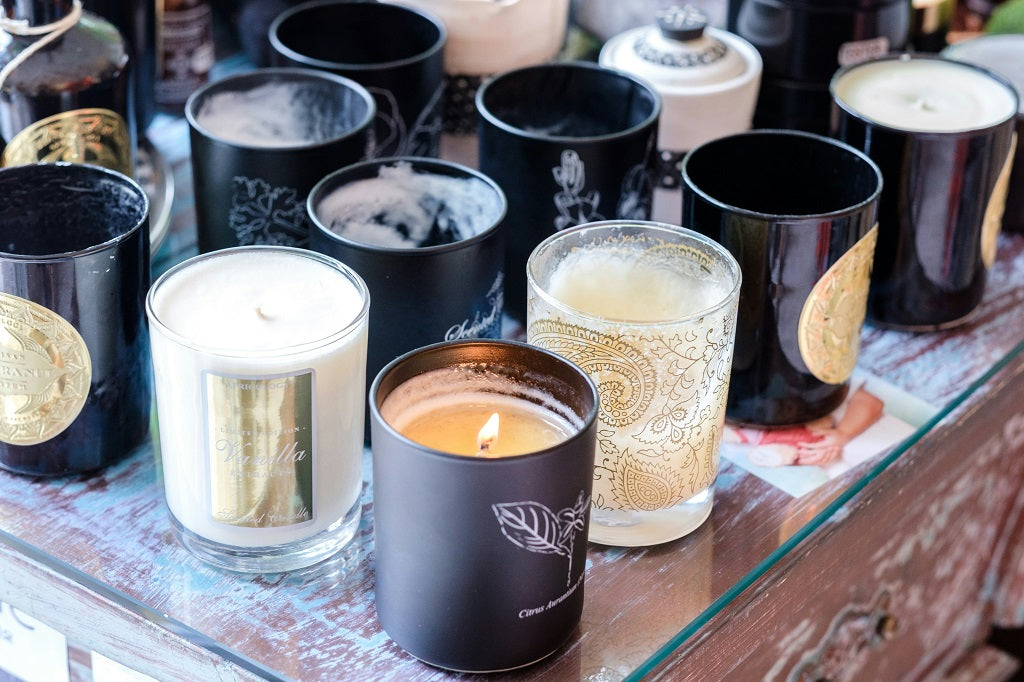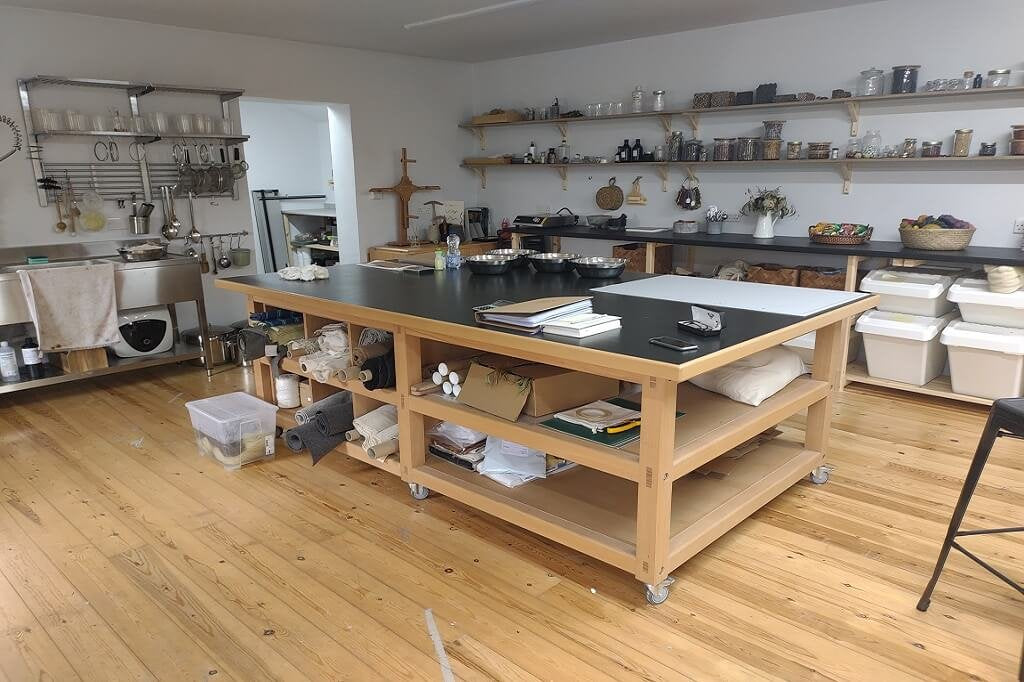Welsh Tapestry Blankets
Welsh Tapestry Blankets

A Welsh tapestry blanket is the absolutely icon of the Welsh woollen industry. Hiraeth** is a Welsh concept of longing for home, which can be loosely translated as 'nostalgia', or, more commonly, 'homesickness'. Nothing says “hiraeth” more than an iconic welsh tapestry blanket
The tapestry blanket is a double cloth fabric which produces a patterns on both sides and accordingly is double-sided and fully reversible. Many of these patterns were owned by Welsh mills and some of their names are still used today. For example, some of the most popular include Caernarfon, which is also called the Portcullis design, Pennsylvania and Dyffryn. The main features of these patterns are the bright colours, geometric designs and the reversible nature of the material.
They are a stunning addition to any home, traditional or contemporary. Looked after well, they will become a family heirloom of the future.
** Hiraeth is a Welsh concept of longing for home, which can be loosely translated as 'nostalgia', or, more commonly, 'homesickness'. Many of us Welsh claim 'hiraeth' is a word which cannot be translated, meaning more than solely "missing something" or "missing home."
Welsh Tapestry Blankets History
Early History from 12th Century
Wales is famous for its wool industry and its blankets from its early history to modern times. The Welsh blankets history is a long one! Whilst sheep farming and the spinning of wool appears in Wales in the pre-historic period, it was not until the 12th century that sheep became an important part of the Welsh economy.
Early History of Tapestry Blankets
It is, however, difficult to pinpoint the origin of the Welsh tapestry that we know and love today. There is evidence of Welsh tapestry blankets surviving from the eighteenth century. A pattern book from the 1770’s by William Jones of Holt in Denbighshire, shows many different examples of tapestry patterns. Jones was a weaver from a small town called Holt, and he meticulously kept a record of his tapestry blanket designs.
Industrial Revolution and after
The rich availability of wool made Wales a textile hotspot even before the Industrial Revolution. But with the ability to harness the power of the waterways heading down from the tops of the valleys, it was a prime location for mass building of mills. From the mid-1800s, the Welsh woollen mills were occupied with providing practical clothing to the rest of Britain and the world.
There were more than 300 Welsh woollen mills operating in the early 1900s. During the Industrial Revolution of the 19th century, the Welsh woollen industry was slow to mechanise compared to the mills of northern England. This became a prime reason for its subsequent downfall. When railways reached mid Wales in the 1860s, they brought a flood of cheap mass-produced products that overwhelmed the local industry. At its peak, there were over three hundred woollen mills in Wales but after World War 1, the industry went into steady decline and today only a few mills continue to operate.
What does Carthen mean?
Carthen (Carthenni as a plural) is the Welsh word for traditional Welsh blankets. These iconic Welsh tapestry blankets were historically woven on narrow looms but subsequently wider looms in traditional double weave patterns and colours. They are blankets made with several coloured to produce a check design. They normally have fringes and are sometimes known as a Fringed Quilt.

Weaving Welsh Tapestry Blankets
Using pure new wool on 1930's Dobbcross looms, each tapestry is traditionally woven. Each warp is threaded through the heddles by hand using the skills and processes of the last one hundred years. The traditional ‘double weave’ patterns produce reversible blankets, known in Welsh as ‘Carthenni’, that are practical, hard-wearing and genuinely warm. In sizes ranging from Baby Blankets to Throws and King sizes, these blankets are suitable for use in living rooms as well as bedspreads.
These tapestry blankets are woven in Wales and although these blankets are universally known as Welsh tapestry blankets, they are not really tapestries at all. They are basically two layers of cloth, often known as a ‘double-weave’ cloth, each in a different colour and usually with a geometric pattern. The weaving itself requires a complicated stitching together of the two layers of cloth to produce one double-weave blanket. This double-cloth structure creates practical, hard-wearing, large and heavy blankets with bold reversible patterns. For all these reasons, Welsh tapestry blankets have become famous the world over and are almost guaranteed to keep you warm in all weathers and will give an iconic reversible patterned blanket to decorate any home.
They are as popular today as they have been for over 100 years. Traditionally they would have been given as wedding gifts to be handed down from generation to generation. They are long wearing blankets and if cared from well, they could be part of your family heritage to pass on to your future generations.
Welsh Tapestry Patterns
Many of these patterns were owned by Welsh mills and some of their names are still used today. For example, some of the most popular include Caernarfon, which is also called the Portcullis design, Pennsylvania and Dyffryn. The Caernarfon (or Portcullis) is among the most iconic Welsh patterns. If you think of a Welsh tapestry pattern, then this Caernarfon pattern is likely to be the most familiar thanks to its mass production in the 1950s and ‘60s. There are some experts that believe the classic Welsh patterns were the precursor of many of the North American folk art textile traditions, largely as a result of widespread Welsh emigration during the 1790s onward. In areas such as Pennsylvania, where the Welsh settled in significant numbers, the quilts and blankets of the neighbouring Amish are almost identical to Welsh tapestry blankets.
The other classic patterns are the Dyffryn and Pennsylvania patterns (also Anglicised as Duffryn) which is woven by Meiln Teifi in Drefach Felindre, Carmarthenshire.
Tapestry BedspreadsOur Welsh tapestry blankets range from push chair and cot sizes as baby blankets, to throws, single, double and king size blankets and can be complimented with a Welsh tapestry cushions in various sizes.
| Blanket - Throw Size | Size (cms) |
Size (inches) |
Weight (kgs) |
Weight (lbs) |
| Throw | 170 x 115 | 67 x 45 | 1.5 | 3.4 |
| Throw (Large) | 180 x 160 | 70 x 65 | 1.7 | 4.0 |
| Single | 230 x 180 | 90 x 72 | 2.0 | 4.5 |
| Double | 230 x 230 | 90 x 90 | 2.4 | 5.0 |
| King | 255 x 230 | 100 x 90 | 2.7 | 5.8 |
To get the correct size, you need to decide if you want the blankets to drape over the sides of the bed and also at the end of the bed. For example, in the UK a double bed is 140cms wide. Using the measurements above, a single blanket would drape to the floor about 20cms (or 8 inches) on each side of the bed (180cms -140cms divided by two). A double blanket at 230cms wide would drape approximately 45 cms on either side (18 inches) and hence would drape almost to the floor on either side of the bed.
Welsh tapestry blankets, often known as Welsh Rugs, have a long and rich heritage but are nearly as popular today as they were 100 years ago. They make great presents which will last a lifetime and are the warmest of bed blankets for any weathers. They are also great for a cwtch - everybody can cuddle but only the Welsh know how to cwtch :)
Welsh tapestry Baby Blankets
These baby blankets are available in a smaller and larger sizes suitable for a push chair or a cot. looked after well, they can become a family heirloom of the future

